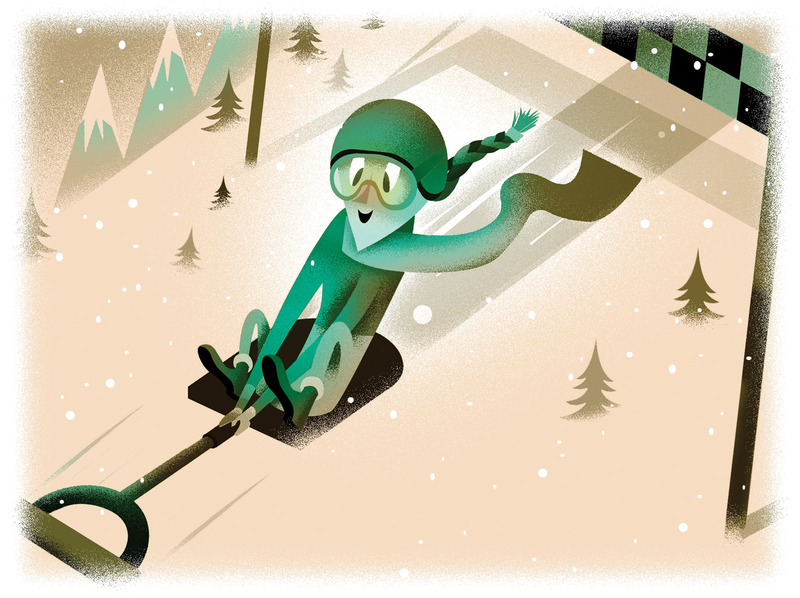The Local newsletter is your free, daily guide to life in Colorado. For locals, by locals.
There are cooler ways to die.
That’s all I can think as I settle onto a large shovel near the top of the blue Exhibition run at Angel Fire Resort, about an hour outside of Taos, New Mexico. The sun reflects off my silver steed as a man in a black cowboy hat explains what’s going to happen next. In a few seconds, he’ll let go of the handle, which is positioned in front of me, and step out of the way, leaving me to fly down 600 feet of groomed snow with nothing but a sheet of curved aluminum between my (breakable) body and the steep, hard ground.
This is the World Championship Shovel Races, the only contest on the planet that showcases the dangerous yet exhilarating sport of riding a shovel down a ski run. Exactly how the bizarre activity got started remains buried in mountain myth. However it began, though, shovel racing has taken hold in the town of Angel Fire (population 1,113), where everybody from children—known as the Little Scoops—to “professionals” waxes their shovels for some serious competition once a year. Some experienced racers wrap duct tape around the ankles of their snow pants (to keep air from whooshing up their bibs and slowing them down) while hardcore competitors don spandex suits similar to those of speed skaters. These fancy outfits create an aerodynamic shape that helps veterans careen down the hill at speeds topping 60 mph. If that sounds crazy, well, it is. Shovel racing made an appearance at the inaugural Winter X Games in 1997 but was banned from future events for safety reasons. (Competitor John “Shovelmeister” Strader cracked his sternum, bruised his heart, and broke his jaw, leg, and back during the race.)
A sport deemed too dangerous by a contest that includes Superpipe and Snow BikeCross events should have given me pause before I signed up for the media race. The waiver, too, offered a warning: “…any snow bank, netting, fencing or other devices erected by Angel Fire Resort…are designed only to protect spectators and are not designed to protect racers.” But it’s only when I’m already too far in to turn back—precariously perched on that shovel, the final racer in my division—that the terror truly takes hold.
Once the cowboy drops the handle, self-preservation (and the tiniest thirst for speed) takes over. I focus on maintaining the appropriate posture, a kind of boat yoga pose in which I stretch my arms forward and raise my legs a few inches off of the ground (translation: the most intense ab workout ever).
My path is straight through the first half of the race; then I catch an edge and spin like a top for the rest of the run. I somehow manage to stay on the shovel and retain most of my pace through the finish line—but then there’s the issue of how to stop. I’m supposed to simply stand up and grab the handle of the shovel, which seemed a lot easier when I was stationary. Now, rushing along at roughly 57 mph, I dig my gloved hands into the slope in front of me to brake as snow flies into my face. It’s not elegant, but it’s certainly effective.
A group of local broadcasters are doing a victory dance as I brush the flakes off my goggles, so I know I haven’t won. Yet my time is a respectable 15.26 seconds (painfully slow compared to the winning time of 13.8 seconds in the women’s professional division), which nets me fourth place out of about 35 racers. This year, the pro winners take home $500; my category only gets bragging rights. As I glance up at the snowcapped Sangre de Cristo Mountains, set against an azure sky, I vow to come back next year and collect them.









